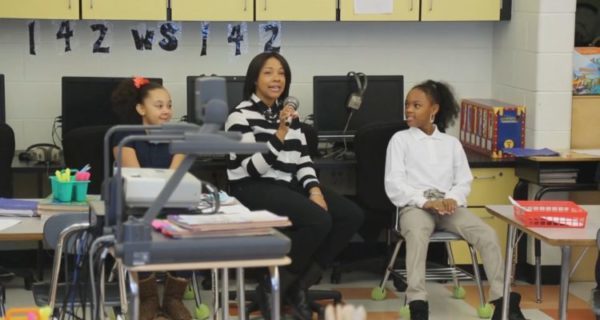
New discipline techniques could be key to improving student outcome at Pittsburgh Public Schools
This story first appeared on NEXTPittsburgh, which publishes Kidsburgh.
By Bill O’Toole
When a student is in trouble at school, how do things change when they’re met with communication instead of suspension? How does a school change when the focus is on community and problem-solving instead of punishment?
After two years of research examining those questions, Pittsburgh Public Schools is releasing data showing that the district’s new discipline procedures have reduced suspension rates in certain schools by roughly two-thirds since 2015.
The findings, published on Jan. 2, were the result of a two-year study completed by the local offices of the RAND Corporation in partnership with the school district. While researchers emphasized that the data set is small and that further studies are needed, they say the numbers are nonetheless an encouraging sign as Pittsburgh’s Public Schools moves to expand the use of restorative practices at every school in the district within the next several years.
Restorative practices refer to a broad range of nonpunitive communication and intervention techniques designed to strengthen social connections within communities and institutions.
While the needs of every institution are different, these techniques include traditional group therapy activities like using discussion circles to resolve disputes as well as emphasizing listening and compassion at all levels of administration.
While social scientists originally developed restorative practices for use within the justice system, over the last decade education experts have adopted the approach in schools as an addition — and occasionally an alternative — to traditional discipline.
“The underlying goal is building a positive school culture through improving relationships,” says Catherine Augustine, a senior policy researcher with RAND. “There are a lot of ways to do that.”
According to Augustine, interest in restorative practices among educators picked up especially in 2014, when the Obama administration issued guidance to public school districts imploring them to find innovative ways to lower suspension rates.
When a child is suspended, they miss instruction time and are removed from their community. Often the result is not improved behavior or improved grades. And suspensions, even for young children, can be a first step in the discriminatory school-to-prison pipeline.
In Pittsburgh and around the nation, educators and activists have pointed to the vast racial disparities in school suspension rates as a persistent sign of institutional bias. A University of Pittsburgh study published in August of 2018 found that black students in the Pittsburgh region are being suspended at nearly double the rate of their white classmates.
The recently released RAND study began in 2014 when the school district was awarded a grant from the National Institute of Justice to apply restorative practices in 22 Pittsburgh schools and measure the results. Teachers were trained by experts from the International Institute for Restorative Practices (IIRP) in Bethlehem, Pa., and data collection carried on from 2015 to the end of the 2017 school year.
While suspensions at the middle and high school levels held steady over the two-year period, researchers noted a significant drop in the number of suspensions in the participating elementary schools. Those schools saw about a 60 percent drop in the number of days lost to suspensions. Augustine noted that lower suspension rates among black students, in particular, were driving the positive numbers.
In addition, Augustine says teachers reported a significant improvement in the broader school culture throughout the two-year research period. This kind of enthusiasm is rare in multi-year studies, she notes, and teachers often get frustrated with new work procedures after several months.
“The district has been heartened by the buy-in and the use, and the lower suspension rates,” Augustine says. “They’re hoping that will come.”
Indeed, the school district was so pleased with the results, they made plans to roll out restorative practices citywide before the study’s data collection and analysis had even finished. Using their team of 50 teachers, administrators and security guards who received training from the IIRP, employees in every one of the city’s 54 public schools received standard restorative practice training in the fall of 2017.
“We moved pretty quickly,” says Christine Cray, director of student services reforms with Pittsburgh Public Schools. “But we knew we had to act.”
While restorative practices are now widespread, Cray says training sessions for more specialized restorative practices are ongoing across the city, often because the teachers themselves request them.
“It’s encouraging,” she says, “to see something we feel in our gut is helpful actually be supported by research.”